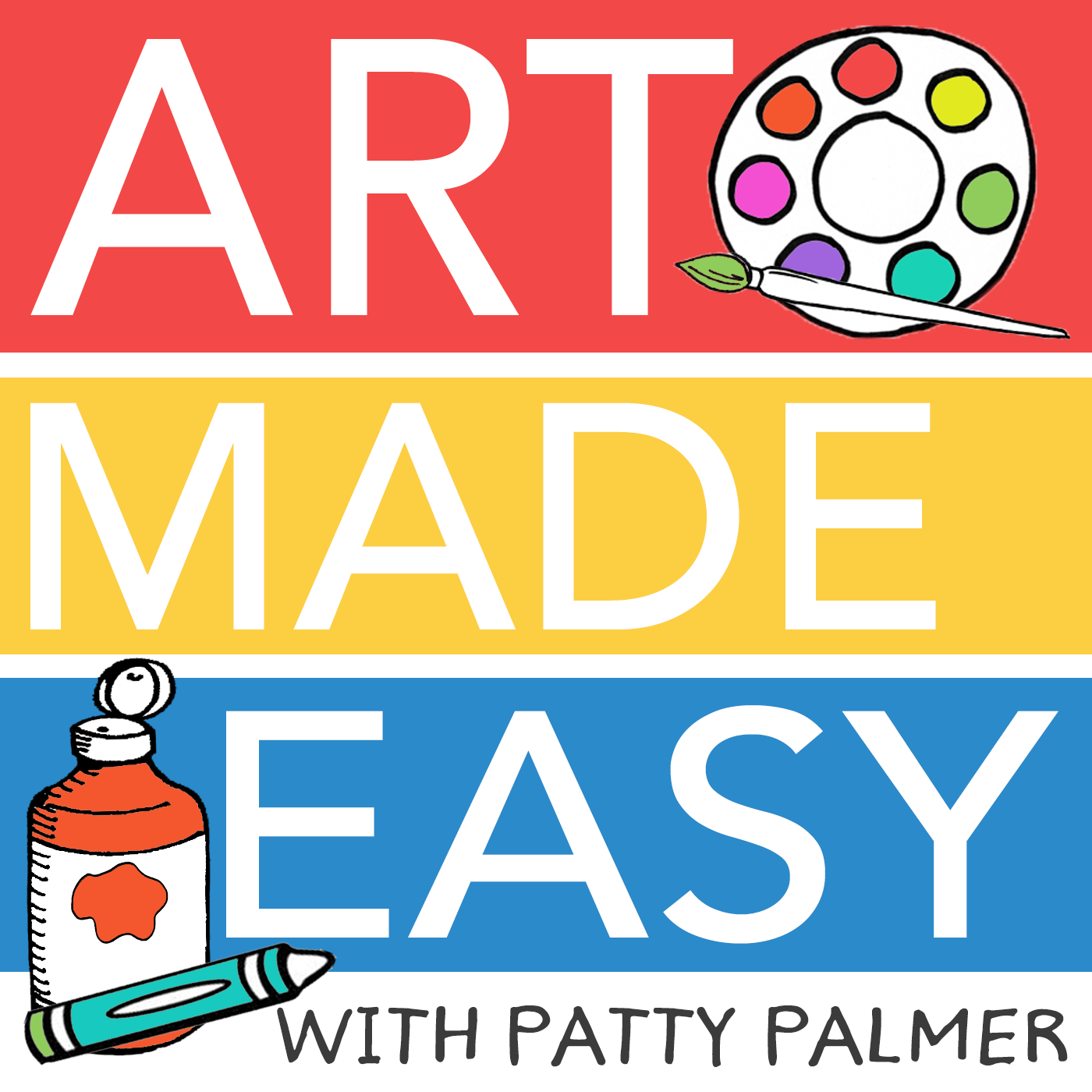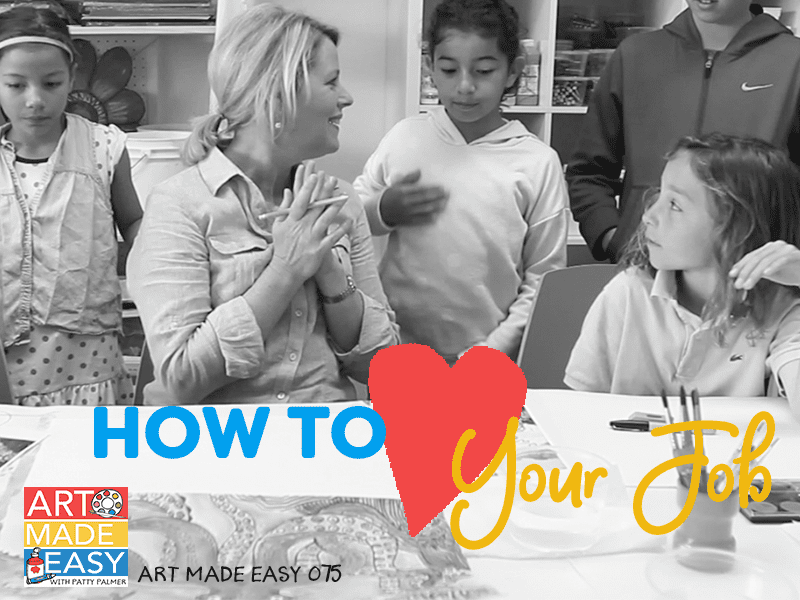Have you ever felt frustrated or flustered at work? Perhaps a bit anxious or uncertain? Creating art lessons, prepping supplies, managing behaviors and dealing with uncertainty can challenge even the best of us.
Today’s episode of Art Made Easy takes a look at how one book, Turning Pro by Steven Pressfield changed the way I approached my day. As a writer, it made a huge difference in my productivity and as a teacher it allowed me to look at my job with more focus and less distraction.
IN THIS EPISODE YOU’LL LEARN:
• How having a professional mindset can help you in the art room
• What are the real differences between amateurs and professionals
• Why looking into the future can be just as limiting than looking into the past
• Whether or not you need to offer many different mediums in your art program
• Why I believe you can be both a creative and a business owner
• What I say before my students walk in the door
LISTEN TO THE SHOW

My best advice for teaching art to kids.
Have you ever felt frustrated or flustered at work? Perhaps a bit anxious or uncertain? Creating art lessons, prepping supplies, managing behaviors and dealing with uncertainty can challenge even the best of us.
Today’s episode of Art Made Easy takes a look at how one book, Turning Pro by Steven Pressfield changed the way I approached my day. As a writer, it made a huge difference in my productivity and as a teacher it allowed me to look at my job with more focus and less distraction.
IN THIS EPISODE YOU’LL LEARN:
• How having a professional mindset can help you in the art room
• What are the real differences between amateurs and professionals
• Why looking into the future can be just as limiting than looking into the past
• Whether or not you need to offer many different mediums in your art program
• Why I believe you can be both a creative and a business owner
• What I say before my students walk in the door
LISTEN TO THE SHOW
LINKS & RESOURCES
Enrolling new Sparklers on January 3, 2018To learn more about The Sparklers Club
You can visit Patty through Deep Space Sparkle on Facebook and Instagram
FacebookInstagram
Turning Pro & The War of Art by Steven Pressfield
AME 007: How to Create a Thematic Unit with Laura Lohmann



LINKS & RESOURCES
Enrolling new Sparklers on January 3, 2018
To learn more about The Sparklers Club
You can visit Patty through Deep Space Sparkle on Facebook and Instagram
Turning Pro & The War of Art by Steven Pressfield
AME 007: How to Create a Thematic Unit with Laura Lohmann

My best advice for teaching art to kids.
Yes, the day has come!
After a long time deciding if, I finally said when.
Thank you SO much for your encouragement, show suggestions and help getting Art Made Easy off the ground.
Many of you were so pumped about this show but confessed that you had no idea what a podcast was. I love you guys for your unbridled enthusiasm.
Here’s a quick definition of a podcast & what to expect from Art Made Easy:
A podcast is a free radio show. The host (me!) interviews guests or talks about a favorite subject. You get to listen through your computer, laptop or smart phone. I like to listen to my favorite podcasts in my car during long travel days or on my walks via set of ear buds and my iPhone.
You can subscribe to the show via iTunes and Stitcher radio. The benefit is that your free podcast ap on your iPhone will automatically be updated with all the podcast episodes from any show you subscribe to.
Go ahead and give it a try!
To listen on your laptop or computer, just click the play button in the colored box below.
To listen via iTunes, click on the “play in iTunes” banner and click subscribe.
And now onto the show…
For my first show, I wanted to tell you my story of how I became an art teacher. We all have different paths and this one is mine. I’ll share advice to those who are just starting out as an art teacher and some of my best tips for teaching art to kids.
This episode is for anyone who thinks they may not have the qualifications to be an art teacher. Teaching art to kids doesn’t have to happen inside a classroom. You can teach art at home, at a summer camp and even as a volunteer (like I did).
If you are an art teacher just beginning your journey, I’m sharing my best advice to get you through that tough first year. Download my free handout and keep it in your teacher planner and refer to it when you have a tough day.
LISTEN TO THE SHOW
SHOW NOTES:
Drawing With Children: A Creative Method for Adult Beginners, Too
Art Lab for Kids: 52 Creative Adventures in Drawing, Painting, Printmaking, Paper, and Mixed Media-For Budding Artists of All Ages (Lab Series)
National Art Convention
CreativeLive- free online classes
Art Teachers Facebook Group
Website: Painted Paper in the Art Room (Laura Lohmann)
Website: Art of Education
Book: Classroom Management for Art, Music, and PE Teachers
PS – Please leave a review on iTunes!
Art Made Easy is now live on iTunes! Subscribing to the show and leaving an honest review really helps the show gain visibility and allows me to tailor the show to your needs.














Over the quiet vacation my feelings about teaching (part time elementary) began to sink as I reflect on some of the most difficult challenges at school, meaning student behaviors. I do feel somewhat isolated, something mentioned at the end of the podcast. But it buoys my spirits to hear an explanation of professionalism vs. amateur status. It is a mindset that I want to keep on exploring and nurturing if I am going to be able to continue. Thanks so much for the realistic practical encouragement for the New Year!!
Dear Frances, behaviours are the hardest part of the job. I like the part where Patty says the student is someone’s baby. I work with secondary/high school students, at times it’s hard to see them as someone’s baby when they are challenging you on an adult level. Confirmation of that child inside comes when I share candy or hand out responsibilities. I used to teach pre-K and refer back often to my experiences there. We are all big kids in some way trying to figure life out. When I get frustrated I think of this book I love, “All I Really Need To Know I learned In Kindergarten”.
Will look at the one Patty mentioned. Lots of encouragement. Sending positive thoughts and all good wishes for the new year and term.
hi
what about pencil shading?
what age group is right for pencil shading?
Really great question. Any grade can do pencil shading, especially grades 2 and up (ages 7+) but here’s what I find…it’s a bit boring. And for large groups of kids, you don’t want boring. Pencil shading can come at any stage in a young artists life. I prefer to dive into exploration with paints, pastel, color, etc and gently move into the finer details of rendering later on.